
Farr's latest offering
If their first place in last weekend’s light wind Alicante in-port race is anything to by, then the Ian Walker-skippered Abu Dhabi Ocean Racing go into this weekend’s start of the Volvo Ocean Race’s opening leg to Cape Town as favourite. Unfortunately the in-port race was really no gauge of future performance.
Built by Persico in Italy, the first Emirati-backed VO70 is the only boat in this year’s race from Farr Yacht Design, who penned the two Telefonica boats for the last race.
Pat Shaughnessy, President of Farr Yacht Design, recognises that the opening in-port has little bearing on the overall results, but is tentatively positive. “We won the in-port race last time with Telefonica and we won the time before with Sony Ericsson, so there is déjà-vu, but having won the Fastnet Race too this time it is encouraging and feels good,” he says.
This Volvo Ocean Race is the third outing for the VO70 canting keelers and Shaughnessy points out that nowadays they have a good handle on the design space. In designing Abu Dhabi Ocean Racing they took as their base Telefonica Blue, which finished second last time around, and added to the mix some changes to the rule (reduced sail inventory, maximum combined fin-bulb weight, etc) and the new course (going into the Gulf, to Sanya, China and Auckland, etc). “Plus,” says Shaughnessy, “you gain a team with different people in it and different perspectives on how the race is won and together you create a result.”
The new course creates minor differences in the spread of anticipated wind angles and speeds to be seen on the race track, but this hasn’t led to massive conceptual changes for the latest generation VO70s says Shaughnessy. This time what has are the points scoring bias shift away from the in-port races to the offshore legs and the more limited sail wardrobe.
According to Shaughnessy the weight limits that were once difficult to achieve during the build of VO70s are now easy to reach. “Last time you were working out how to subtract and how you could whittle things down, whereas now the challenge is how you are going to spend the rest of the weight you have left over. The games now are more about how you optimise your centre of gravity, how you reduce windage and manage water and air, etc. And on the engineering side where you were trying to chase minimum weight, now you are trying to produce structures that are more forgiving and easier to use for the crews, because the weights are so achievable.”
Lack of sail slots in this race is a key aspect and did affect the hull design of Abu Dhabi Ocean Racing, says Shaughnessy. However he believes the team are comfortable with the choices they have made and some slots remain open for use later in the race. “If you are only going to have three masthead sails and one is going to be a Code 0, you are not going to have sails that cover the whole range, so you have to make some approximations on how sail performance is going to limit the hull shape and then get a hull shape that supports them. So you certainly could have a very reachy inventory and then get a very reaching-orientated boat that was powerful and supported that. There were certainly choices that could be made in there and there are some differences of opinion out on the dock that we are going to see.”
Most noticeable about the Abu Dhabi Ocean Racing VO70 is her enormous bow. Shaughnessy says this has come about because last time the Telefonica team based themselves out of Alicante and their decisions were mostly based on their training in the Med. “This team’s influence is slightly different – and the race course, sails and points bias are all slightly different - so we have ended up with a boat that is quite full forward to promote high speed reaching and running, but we think we have found it in a way that really doesn’t compromise some of the light air boat speed. We think we have been able to maintain some of our strengths from our previous work and build on some of our weaknesses.”
While the Emirati boat may appear fat bowed, Shaughnessy says it remains one of the lowest wetted surface area boats in the fleet – as demonstrated by her pace in last weekend’s light wind in-port race. The added buoyancy above the waterline will benefit her reaching-running qualities, but could be a slight hindrance bashing into a chop. “Quite a few people look at the local stem-shaping and see quite a big bow and jump to the conclusion that it is the fullest boat forward, but I don’t necessarily think that is true. The one thing I’d point out is that the total bow fullness or the LCBs [longitudinal centre of buoyancy] of the hull shapes are quite similar across the fleet with the exception of Camper, which has the LCB further forward in order to have its keel forward of its mast. If someone was going to be extreme in their bow fullness you’d point there, even though their local stem shaping doesn’t indicate that path.
So why the full bow? “A lot of the work we were doing 10-15 years ago was in IMS that severely encouraged aft LCB hull shapes, so you were pushed in the other direction. Real offshore sailing encourages boats as full forward as you dare to get them, with a bow-up attitude. Much of the work we have done in the last few years has been about how we get boats that are easier to handle for their crews so that they are running a higher percentage of their polar speeds. So it is about how easy it is to operate the boat, that is forgiving, bow up, easy to drive, etc.”
Several unique features of Telefonica Blue (now the Mike Sanderson-skippered Team Sanya) have continued on into the Abu Dhabi boat such as the lack of sidedecks in the cockpit. Some features of TeleBlue now feature on all the other VO70s this time such as the ‘forestay tower’ and the jumper-less rig. Less obvious are the daggerboards which have a square lower end that closes the aperture at the bottom of the daggerboard case – something being used by several teams in this race.
This time around Shaughnessy says he is pleased with the way they have laid out the interior of the Abu Dhabi boat, the internal structure and how it allows the stack to be dragged around below.
New this time is the curved foredeck so that the cabin top fulfils the requirements of the VO70 rule without protruding above deck.
Shaughnessy explains the reasons for this: “If you have a traditional deck and a cabin, the water does two things: it comes along, hits the cabin and becomes airborne. That is bad because spray is very debilitating. And once it encounters the cabintop some of the water is encouraged down the windward side and into the windward side of the cockpit. If your deck doesn’t have a cabin, then it lets the water cross it and drop off the leeward side.” So as a result the Abu Dhabi deck sheds water quicker and this keeps the boat lighter.
They also put a lot of effort into running lines below deck. Shaughnessy reckons that for weight reasons other teams aren’t doing this to the same degree as they have, however you end up with a better aerodynamic solution and there is no rope on deck to get caught or for the crew to stand on.
The Farr office now has a good handle on the million and one different ways to do the twin asymmetric daggerboards – their position fore and aft and inboard or outboard in the hull, how much they are inclined or swept, plus of course the length, chord and section of the board itself.
Unfortunately for casual observers Shaughnessy points out that not a lot of conclusions can be drawn from what you can easily see of the boards, in particular their inclination. “Some of the daggerboards that you see inclined a little differently, I think the differences on the water won’t be as big because we might heel a little more than those boats in some of those conditions. They end up orientated in the water relatively similarly. But you have the ability in how they are inclined certainly to bias your boat towards reaching or beating. I am not sure they are so dissimilarly done right now.” Also some different-looking board configurations can create the same net effect according to their length, angle of inclination, camber and section shape.
Some boards also look longer because they have their top bearing at deck level. On Abu Dhabi Ocean Racing the top bearing is lower as Shaughnessy says they don’t like the windage caused by having the upper bearing at deck level. The Abu Dhabi VO70’s boards are also not maximum draft, so they therefore will miss the keel when it is canted.
Thanks to the sail limitations, this time around there is fractionally less emphasis on the stack. Less sails equals less weight, however because of the sail limitations and the durability now demanded of them, the sails are heavier with the net result that the weight of the stack is slightly lighter. The principle reason for the lack of sidedecks in the cockpit is to lower the centre of gravity of the stack and to reduce its windage.
Design tools
The tools to develop boats like the Abu Dhabi Ocean Racing VO70 have come a long way over the last cycle. For example Farr Yacht Design has its own supercomputer cluster enabling them to run their own RANS CFD codes and panel CFD codes which they have developed in house. “Some really incredible FEA work was done this time, which was a big step up from the work we have done in the past,” says Shaughnessy, who adds that thanks to the new technology and faster increased computing power they were able to shoehorn in as much development as they did for Telefonica last time into one third of the time for Abu Dhabi.
“With these tools, the benefit is that you are testing full scale, so you don’t have scaling effect in it and you are able to take the components apart, so you know all the forces on a fin or a bulb or a hull, etc independently. The codes themselves may not have evolved so much, but the way you use it and the things that you plug on to it to help you interrogate the results are really phenomenal.”
Perhaps most exciting is that the added computation power means that more complicated wave simulations can be run, including oblique seas, etc. “Now we are doing all sorts of sea angle simulations, we even have high speed running with waves and they are very complicated things to solve. Three years ago we didn’t have the computing power to do that.”
Shaughnessy says what they would ultimately like to be able to do is to run RANS code in real time. But this is some way off. Currently to run a complete simulation that might have previously taken a week still takes around three days.
While we have heard no murmurings of a possible change in rule or boat type for the Volvo Ocean Race in 2014-15, Shaughnessy says he hopes the VO70 stays as there is more development work still to be had from them. “What you would like to see probably if you were choosing again is to position a new rule so that it produced boats that could sail in other places – that would help with the afterlife of the boats. Right now VO70s aren’t good IRC boats – they are quite specific.”
A question often raised by those involved in the IMOCA 60 class is why VO70s have to be so heavy. Extra weight for example usually means extra expense. With the latest generation VO70s maximum displacement is 14.5 tonnes whereas some of the lightest IMOCA 60s weigh half this. Shaughnessy points out that if you just used VPP modelling to create an IMOCA 60 the results would always push a design to being wider and more powerful – hence why the Juan K boats are not the lightest in the IMOCA 60 fleet. However with the 60s, the limiting factor is the solo skipper’s ability to operate the platform.
Returning to the design of the Abu Dhabi Ocean Racing VO70, another aspect that may not be so obvious is that while Pat Shaughnessy is the President of Farr Yacht Design, company founders, Bruce Farr and engineering guru Russell Bowler, may not show their faces as often as they once did in public, but nonetheless remain as active as ever in the conception of their Annapolis-based company's boats.

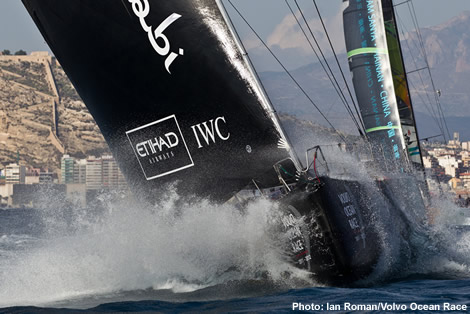
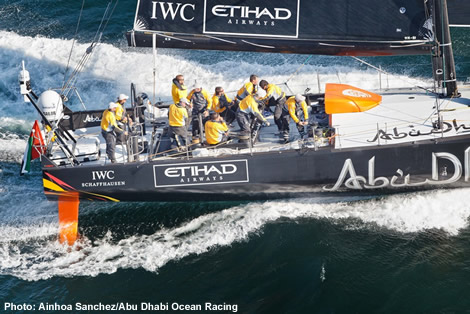
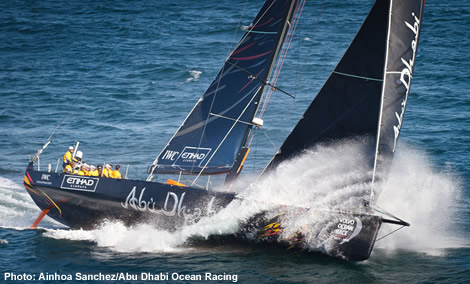
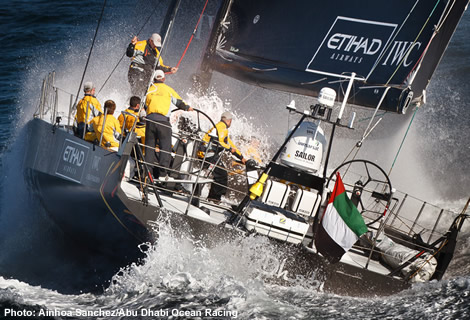
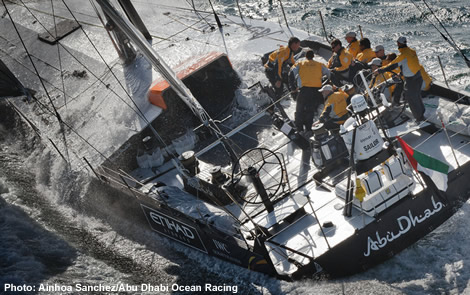
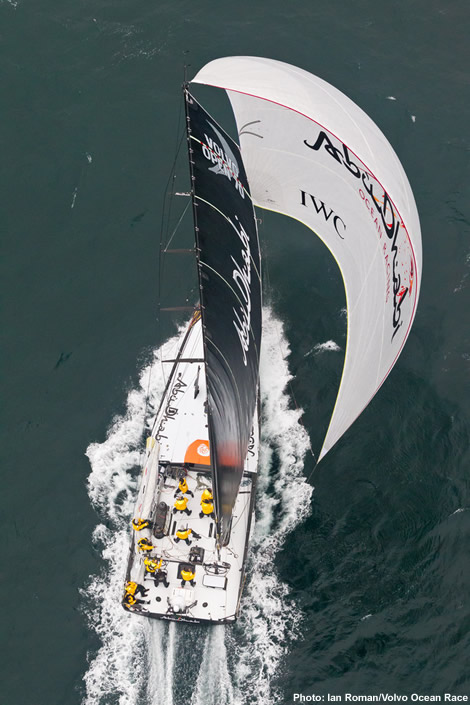
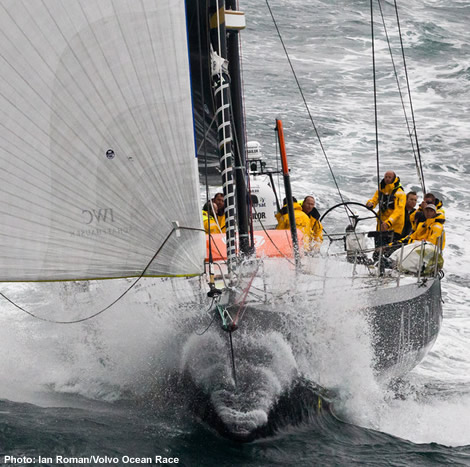
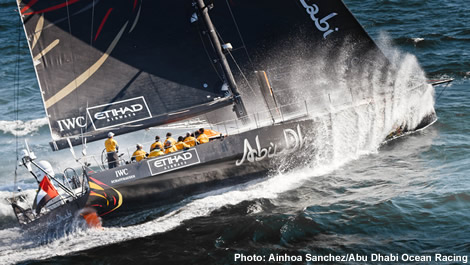









Latest Comments
Add a comment - Members log in